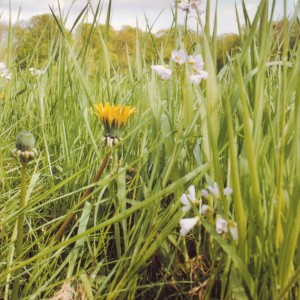No Other Thing
 “No other thing do I know that brings so much harm and suffering as an undeveloped and uncultivated mind.”
“No other thing do I know that brings so much harm and suffering as an undeveloped and uncultivated mind.”
This is the first part of a quote from the Buddha, which opens a beautiful set of meditation instructions given by Thanissara, former nun and current director of Dharmagiri Hermitage and Outreach in South Africa.
Thankfully, the quote goes on:
“And no other thing do I know that brings so much happiness, when cultivated, as the developed mind.”
So how do we cultivate and develop the mind?
We learn to meditate! Click here to listen to Thanissara’s inspiring instructions. (40 minutes)
***
(illustration by Nomoco)
From Spirit Rock Kitchen
Spirit Rock Meditation Center has recently started sharing some of its yogi-liscious recipes with regular contributors. In keeping with this spirit of generosity, I am passing along this latest offering, developed by long-time Spirit Rock chef, Max Swanger.
 “Right View” Masala Greens with Paneer
“Right View” Masala Greens with Paneer
(4 servings)
1 lb. paneer fresh cheese, cubed (firm tofu may be substituted)
1/4 cup ghee (clarified butter)
1 bunch mixed greens: chard, collards, and/or kale
1 bunch mustard greens
1/8 bunch cilantro, chopped
1 onion, chopped fine
2 cloves garlic, chopped
2 Tbsp. ginger, grated
2 tsp. curry powder (garam masala)
2 tsp. lemon juice
2 tsp. salt (or to taste)
Directions
1. Cube (about 1/2 inch) fresh paneer. Or substitute firm tofu in 1/2 inch cubes.
2. Toss paneer cubes with a little melted ghee to coat and sprinkle with salt.
3. Place on sheet pans. Use parchment paper, if you have it.
4. Bake in oven at 350 degrees until speckled brown.
5. Wash and chop all greens.
6. Add the rest of the ghee to a pan and cook the onions until soft.
7. Add curry, ginger and garlic to the onions and fry for a minute.
8. On high heat, add in the mixed greens, mustard and cilantro.
9. Cook until tender.
10. Finish greens with salt and lemon juice.
11. Stir in baked paneer.
Enjoy!
***
(image by Kate Pocrass)
For the Difficult Person
 For reasons which will remain unmentioned, I have been thinking a lot lately about the practice of offering metta (goodwill, friendliness) to someone who we in meditation circles euphemistically refer to as “the difficult person.” Traditionally, this person is referred to as the “enemy,” but that seems a bit harsh.
For reasons which will remain unmentioned, I have been thinking a lot lately about the practice of offering metta (goodwill, friendliness) to someone who we in meditation circles euphemistically refer to as “the difficult person.” Traditionally, this person is referred to as the “enemy,” but that seems a bit harsh.
Offering metta is a form of meditation practice that develops healthy, positive, wholesome states of mind — such as kindness and patience — which are clearly beneficial for oneself (these states feel good, for one thing) as well as for others (in that they lead to actions which do not cause harm). We do this practice by thinking of someone who naturally engenders these feelings (a child, a grandparent, someone we admire, or even a pet), then by paying careful attention to what it feels like to be open and friendly toward them and to wish them well. Which nourishes these feelings and helps them develop and grow. And then we practice widening the circle of those we include in our good wishes, adding people we don’t particularly know, people we may have mixed feelings about…and eventually to include everyone, even people we find “difficult.”
This can be a challenge.
Which is why it takes practice.
But it’s important to try to see through the things that we find difficult. Not to overlook them. But to see them in a larger context. To see the positive as well as the negative. And not to fixate on one or the other, but to understand that both these characteristics are a result of situations that are mostly out of our control, and that no matter how annoying, irritating, unpleasant, even destructive these people are, it’s most surely not the only thing that’s true about them.
It’s important to remember this because fixating on the difficulties is not helpful….not for one’s own mental (and physical) well-being…and not for being able to discern the full range of options for dealing with them.
Easier said than done, right?
True. But here’s something that has brought a fresh perspective on this for me. It’s something Rebecca Bradshaw pointed out during metta practice at the retreat here in St. Louis. She said:
Just remember, we are all someone’s difficult person.
What a Life
 I was thinking about the life I have found myself in — this quite pleasant life that seems to revolve more and more around studying and practicing and sharing the Dharma — but I couldn’t quite think of what, exactly, I wanted to say about it, so I decided to go for a little random inspiration by opening one of my (many) dharma books…in this case Teaching of the Buddha, edited by Jack Kornfield…and here’s what popped out:
I was thinking about the life I have found myself in — this quite pleasant life that seems to revolve more and more around studying and practicing and sharing the Dharma — but I couldn’t quite think of what, exactly, I wanted to say about it, so I decided to go for a little random inspiration by opening one of my (many) dharma books…in this case Teaching of the Buddha, edited by Jack Kornfield…and here’s what popped out:
“….Whatever people do, whether they remain in the world as artists, merchants, or officers of the king, or retire from the world and devote themselves to a life of religions mediation, let them put their whole heart into their task; let them be diligent and energetic.
“And if, like the lotus flower, which grows out of muddy water but remains untouched by the mud, they engage in life without cherishing envy or hatred, and if they live in the world not a life of self but a life of truth, then surely joy, peace and bliss will dwell in their minds.”
–from the Buddhacarita, translated by Samuel Beal
Wild.
 OK. So, I’m not quite sure what to say about this, but I recently finished reading Living with a Wild God: A Nonbeliever’s Search for the Truth About Everything, by Barbara Ehrenreich. I was mesmerized. The book gets a little crazy toward the end, but ….wow…. something happened to her…I don’t know what it was, but it sounds a whole lot like the Enlightenment experiences I’ve read about:
OK. So, I’m not quite sure what to say about this, but I recently finished reading Living with a Wild God: A Nonbeliever’s Search for the Truth About Everything, by Barbara Ehrenreich. I was mesmerized. The book gets a little crazy toward the end, but ….wow…. something happened to her…I don’t know what it was, but it sounds a whole lot like the Enlightenment experiences I’ve read about:
“Something peeled off the visible world, taking with it all meaning, inference, association, labels, and words. I was looking at a tree, and if anyone had asked, that’s what I would have said I was doing, but the word ‘tree’ was gone, along with all the notions of tree-ness that had accumulated in the last dozen or so years since I had acquired language. Was it a place that was suddenly revealed to me? Or was it a substance–the indivisible, elemental material out of which the entire known and agreed-upon world arises as a fantastic elaboration?
“I don’t know, because this substance, this residue, was stolidly, imperturbably mute. The interesting thing, some might say alarming, was that when you take away all human attributions–the words, the names of species, the wisps of remembered tree-related poetry, the fables of photosynthesis and capillary action–that when you take it all away, there is still something left.”
***
I don’t know what else to say.
Except: Read the book. It’s fascinating.
And beautifully written, besides.
(image by Lucy Williams)
Eat Like You’re on Retreat
 I’ve said this before but I’ll say it again: I love the food at Spirit Rock and IMS (Insight Meditation Society in Barre, MA.). And I do what I can to eat food like that, as much as possible, wherever I am, especially at home. Which means lots of fresh foods, mostly from plants, cooked simply, but with lots of color, texture and taste!
I’ve said this before but I’ll say it again: I love the food at Spirit Rock and IMS (Insight Meditation Society in Barre, MA.). And I do what I can to eat food like that, as much as possible, wherever I am, especially at home. Which means lots of fresh foods, mostly from plants, cooked simply, but with lots of color, texture and taste!
In honor of which I offer this recipe from the Tassajara Cookbook by Karla Oliveira (from which I’m pretty sure Spirit Rock and IMS take at least some of their inspiration.)
Green Rice Salad
1 cup cooked long-grain brown rice
1 cup cooked long-grain white rice
1/2 cup finely chopped green onions
1 to 1 1/2 cups fresh herbs, minced (parsley, cilantro, oregano, tarragon, or thyme)
1/2 cup grated white cheddar or asiago cheese
1 cup frozen peas, thawed
1/3 cup pine nutes
Balsamic Vinaigrette
1/4 cup olive oil
1 Tablespoon balsamic vinegar
2 teaspoons fresh lemon juice
1 1/2 Tablespoons minced parsley
2 to 3 garlic cloves, minced
1/4 teaspoon sugar
salt and pepper, to taste
Combine all the vinaigrette ingredients together. Toss with the warm rice and then let cool. Toss with onions, herbs, cheese, peas, and nuts. (Makes 1 1/2 quarts)
Enjoy!
***
(image by Miara Kalman from Food Rules, by Michael Pollan)
Mindfulness and Creativity
 Last night I listened to a fascinating exchange between Ed Catmull, president of Pixar and Disney Studios, and Phillip Moffitt, co-guiding teacher at Spirit Rock and former editor-in-chief of Esquire magazine. (The exchange was a talk given at Sprit Rock last Monday night. I listened on tape.)
Last night I listened to a fascinating exchange between Ed Catmull, president of Pixar and Disney Studios, and Phillip Moffitt, co-guiding teacher at Spirit Rock and former editor-in-chief of Esquire magazine. (The exchange was a talk given at Sprit Rock last Monday night. I listened on tape.)
I was especially touched by Ed’s story of how, after 20 years of trying to make the first computer animated movie (Toy Story) and finally accomplishing that and having the animation company he founded go public (the epitome of success!), he found himself feeling lost.
He realized that this was because he had accomplished what he’d set out to do, which meant that it was now done, and not something he could do any more. And while there was an exuberance — which lasted about a week or two — and although he was still quite busy…he felt lost. He had a kind of “is that all there is” experience, which eventually led him to meditation (thanks to his wife who signed him up for a 2 week silent retreat), which then led him to doing one-on-one work with Phillip Moffitt and to establishing an on-going meditation practice through Spirit Rock.
On the tape, both he and Phillip talk about what it means to lead a “learning” organization, about the best ways to facilitate creativity, about the importance of intention, and how mindfulness fits into all of this. It’s definitely worth a listen. To download or stream, click here.
Life is Short
 More mindfulness instructions — in yet another form — this time from the founders of Holstee, a sustainable and mindful design company:
More mindfulness instructions — in yet another form — this time from the founders of Holstee, a sustainable and mindful design company:
This is your life. Do what you love, and do it often.
If you don’t like something, change it.
If you don’t like your job, quit.
If you don’t have enough time, stop watching TV.
If you are looking for the love of your life, stop; they will be waiting for you when you start doing things you love.
Stop over analyzing; life is simple.
All emotions are beautiful.
When you eat, appreciate every last bite.
Open your mind, arms, and heart to new things and people; we are united in our differences.
Ask the next person you see what their passion is, and share your inspiring dream with them.
Travel often; getting lost will help you find yourself.
Some opportunities only come once; seize them.
Life is about the people you meet, and the things you create with them, so go out and start creating.
Life is short.
Live your dream and share your passion.
***
(image: Holstee Manifesto, click to enlarge)
How to be Idle and Blessed
And now for a slightly different form of meditation instruction, from Mary Oliver, in her poem The Summer Day:
 Who made the world?
Who made the world?
Who made the swan, and the black bear?
Who made the grasshopper?
This grasshopper, I mean —
the one who has flung herself out of the grass,
the one who is eating sugar out of my hand,
who is moving her jaws back and forth instead of up and down —
who is gazing around with her enormous and complicated eyes.
Now she lifts her pale forearms and thoroughly washes her face.
Now she snaps her wings open, and floats away.
I don’t know exactly what a prayer is.
I do know how to pay attention, how to fall down
into the grass, how to kneel down in the grass,
how to be idle and blessed, how to stroll through the fields,
which is what I have been doing all day.
Tell me, what else should I have done?
Doesn’t everything die at last, and too soon?
Tell me, what is it you plan to do
with your one wild and precious life?
***
(image from: A Whole World, by Couprie and Louchard)
Breathing in the Body, the Face, and the Hands
 For wonderfully relaxing instructions on breathing in the body (while standing) and breathing in the face/head/throat (while sitting) listen to the last part of Ahjan Sucitto’s Guided Meditation on Standing (given at the recent retreat at IMS in Barre, MA.)
For wonderfully relaxing instructions on breathing in the body (while standing) and breathing in the face/head/throat (while sitting) listen to the last part of Ahjan Sucitto’s Guided Meditation on Standing (given at the recent retreat at IMS in Barre, MA.)
You can listen or download the talk by clicking here. It’s over an hour long, but don’t worry. The first 10 minutes are chanting and the next 20 minutes are silent.
At about the 30 minute mark, Sucitto invites everyone to stand, then gives about 20 minutes of really lovely, soothing instructions for standing and breathing. Then at about the 49 minute mark, he invites everyone to sit down and gives about 15 minutes of exquisitely subtle instructions on breathing in the head/throat/face (while seated).
These end just after the 1 hour mark with instructions to come back into the lower part of the body, especially the spine, the belly and into the hands. (The rest of the tape is more chanting.) His voice is quite soft as he’s guiding, so I suggest using headphones (or earbuds), if possible.
Enjoy!
***
(image: Pina Bausch, by Maira Kalman)

